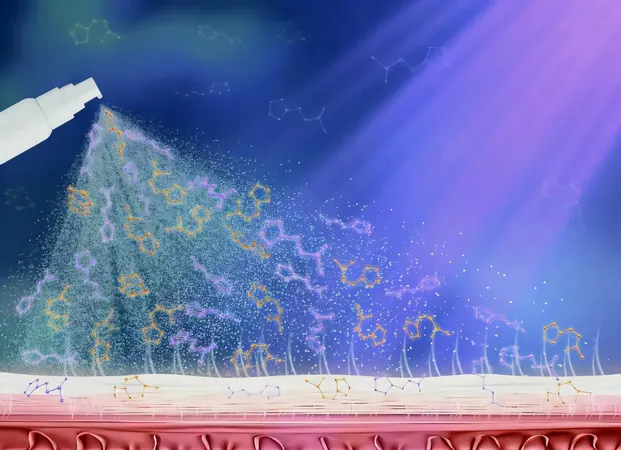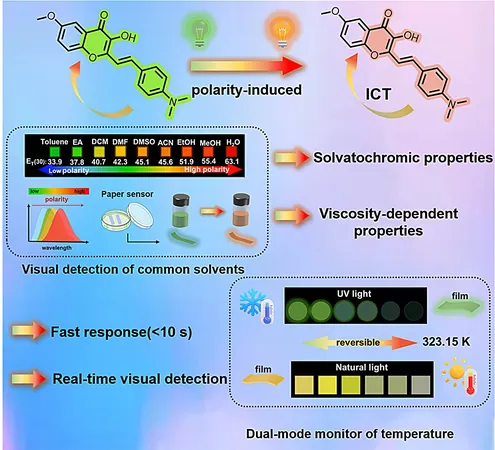
Breakthrough in Sunscreen Innovation: Nature’s Own Urocanic Acid Could Replace Harmful Chemicals
2024-11-22
Author: Wei Ling
Researchers from the University of Amsterdam and the University of Warwick have unveiled an exciting development in the world of sunscreens by exploring the potential of urocanic acid and its derivatives as a new class of natural UV filters. This natural compound, already present in human skin, absorbs both UV-A and UV-B radiation, but its low sun protection factor (SPF) of 1.58 and its tendency to transform into a potentially harmful variant upon UV exposure raised concerns regarding its effectiveness and safety as a sunscreen ingredient.
In groundbreaking studies published in Physical Chemistry Chemical Physics, the research team, led by Professors Wybren Jan Buma and Vasilios Stavros, conducted in-depth investigations into the light-absorbing properties of urocanic acid. Their findings shed light on its interaction with UV light and how these properties can be enhanced through molecular modifications. “This is an excellent starting point for further optimization of its photoactive properties,” Buma stated, highlighting the potential for creating safer, more effective sunscreens that could supplant the synthetic filters currently under scrutiny for their environmental and health impacts.
Urocanic acid, while naturally occurring, poses a dual challenge: it is relatively ineffective as a sunscreen on its own, and it can convert into an immunosuppressive form when exposed to UV radiation. However, Buma believes that ongoing research could pave the way for the design of biomimetic sunscreens using urocanic acid, which would boast a more favorable toxicological profile while retaining strong UV protection.
To tackle these challenges, the researchers employed advanced techniques including high-resolution laser spectroscopy and quantum chemical calculations. Their extensive investigations illuminated the previously misunderstood properties of urocanic acid, distinguishing it from decomposition products that had misled earlier studies. This breakthrough is not just a minor advancement; according to Buma, it could revolutionize how scientists and cosmetic companies approach photochemistry in sunscreens.
In addition to analyzing urocanic acid in isolation, the team delved into its behavior in various solvents, utilizing time-resolved spectroscopy to monitor interactions over an astonishing range of timescales—from mere femtoseconds to prolonged hours. This provided critical insights necessary to fine-tune its photochemical characteristics, bringing researchers closer to developing effective sunscreen formulations.
Importantly, these studies have also pointed towards the discovery of stable derivatives of urocanic acid, which could mitigate the immunosuppressive effects associated with the standard compound. As the research continues, there's a burgeoning hope that urocanic acid could lead not only to innovative sunscreen solutions but also to applications in photothermal materials used for various technologies.
In a world where the demand for natural and safe skincare products is accelerating, could this research signify the dawn of a new era in sunscreen technology? As scientists continue their exploration into the exciting properties of urocanic acid, the answer may soon be revealed. Stay tuned as we monitor further developments!


 Brasil (PT)
Brasil (PT)
 Canada (EN)
Canada (EN)
 Chile (ES)
Chile (ES)
 España (ES)
España (ES)
 France (FR)
France (FR)
 Hong Kong (EN)
Hong Kong (EN)
 Italia (IT)
Italia (IT)
 日本 (JA)
日本 (JA)
 Magyarország (HU)
Magyarország (HU)
 Norge (NO)
Norge (NO)
 Polska (PL)
Polska (PL)
 Schweiz (DE)
Schweiz (DE)
 Singapore (EN)
Singapore (EN)
 Sverige (SV)
Sverige (SV)
 Suomi (FI)
Suomi (FI)
 Türkiye (TR)
Türkiye (TR)